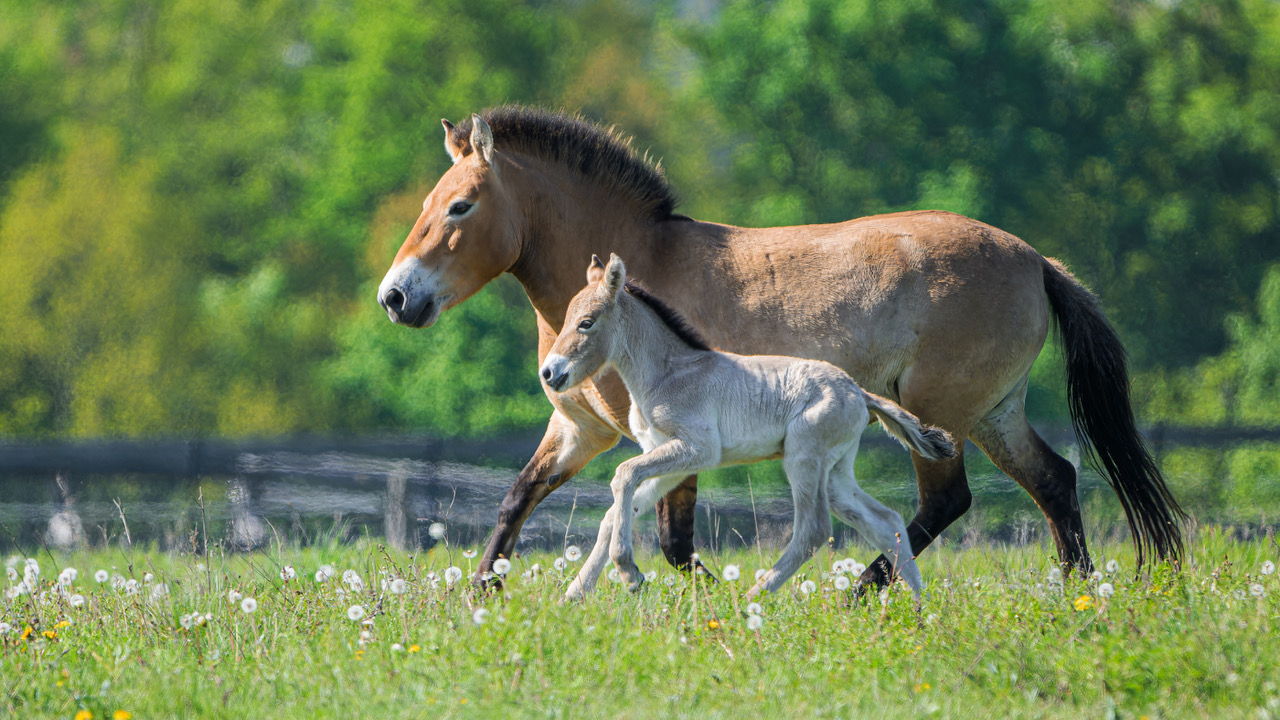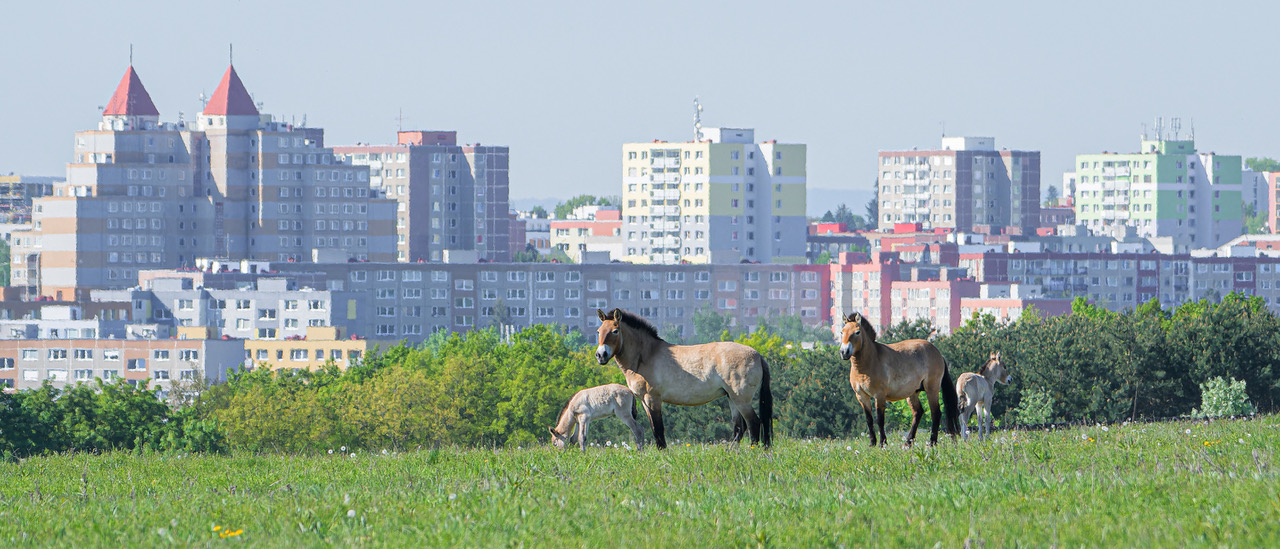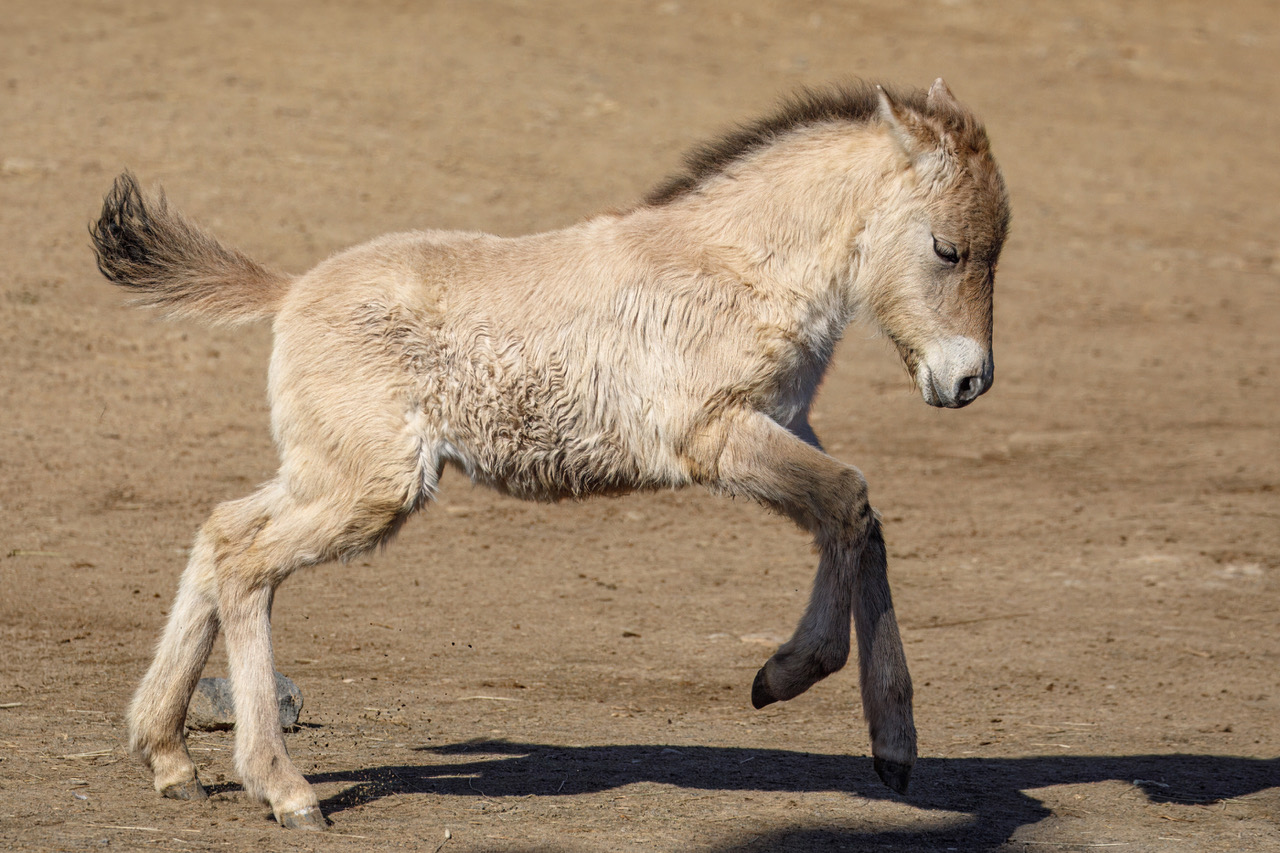
Przewalski’s horse mare Gruhne and her two-day-old foal at Prague’s Maiden’s Castles. Photo Petr Hamerník, Prague Zoo
The breeding of Převalsky horses at Prague Zoo is experiencing an unprecedented baby boom. Today, the third April foal was born at Prague’s Dívčé hrady. Another foal was also born today at the Převalsky horse breeding and acclimatization station in Dolní Dobřejov. In addition, people can see the foal directly on the Prague Zoo grounds. The two-month-old mare Dagina, named by the Mongolian president in March, can be found by visitors in the Gobi exhibit near the upper cable car station. This year, the Prague Zoo has added a total of five young of these last wild horses on the planet.
“The baby boom of foals has its reason, of course, and that is our planned project to reintroduce Przewalski’s horses to eastern Mongolia, to the Valley of the Monasteries. We will start transporting the foals there as soon as there are enough of them in the Golden Steppe in central Kazakhstan,” says Prague Zoo Director Miroslav Bobek.
In the huge enclosure at Dívčí hrady above Prague’s Smíchov, a total of eight horses can now be seen: a stallion, four mares and three foals of unknown sex. One foal was born to the mare Vereda last Saturday, April 26, another followed on Monday, April 28, with the mother being the mare Gruhne. The third foal gave birth today to a mare named Khamina. People can see them, for example, from the lookouts there.

Prague’s Maiden’s Castles now offer unique views of wild Przewalski’s horses with their foals and the city skyline. On the left is the mare Vereda with her foal, on the right is the mare Gruhne with hers. Photo Petr Hamerník, Prague Zoo
The foal was also born at the Prague Zoo’s breeding and acclimatization station in Dolní Dobřejov. In the area of the so-called The largest breeding herd of the Prague Zoo lives in the Bohemian Siberia in the south of Bohemia, which currently numbers three dozen horses. The horses are also being prepared there for demanding transports to the wilds of Mongolia and Kazakhstan. Coincidentally, the mare Yara gave birth to today’s offspring on her tenth birthday.
The oldest of this year’s foals was born directly in the Troja area of the Prague Zoo. On February 27, the mare Victoria II gave birth to a female named Dagina in the Gobi exhibition, which opened last year. She was personally baptized in March by the Mongolian President Uchnágín Chürelsüch. The name Dagina means “Heavenly Fairy” in Mongolian. The president said at the time that if Dagina were to be transported to the Valley of the Monasteries, she could be renamed “Eastern Fairy”.
Prague Zoo plays a crucial role in the story of the last wild horse. It manages its International Stud Book and the European Breeding Program and is actively returning Przewalski’s horses to the wild. Between 2011 and 2019, it carried out a total of nine transports to western Mongolia together with the Czech Army. While it is preparing a project to return them to the east of the country, last year it launched a reintroduction project in central Kazakhstan, where Przewalski’s horses became extinct hundreds of years ago. It transported the first seven horses there last year at the beginning of June.

People will see the mare Dagina in the Mongolian Gobi exhibit at Prague Zoo. Photo Miroslav Bobek, Prague Zoo
The next transport to Kazakhstan is also planned for the first week of June this year. Eight horses – two stallions and six mares – should head to the Altyn Dala area, i.e. the “Golden Steppe”, this year by CASA military aircraft. One will fly from Prague with horses from Dolní Dobřejov and the other from Debrecen in Hungary with horses from the Hortobágy National Park, which is a partner of Prague Zoo for this project.

